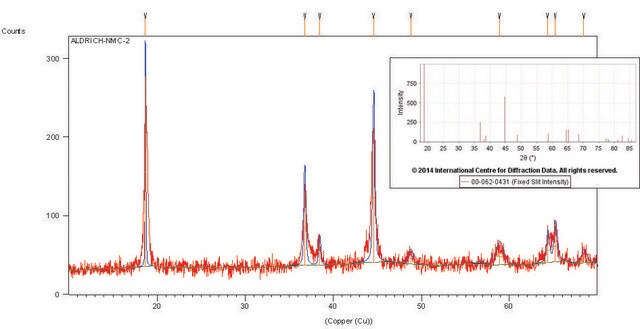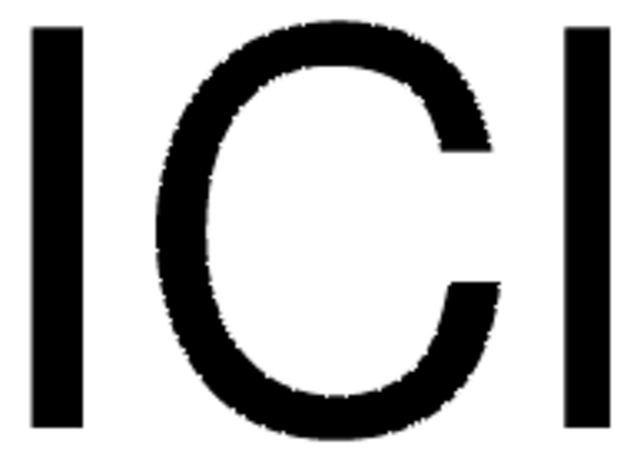765155
Lithium titanate
spinel, electrode sheet, aluminum substrate, size 5 in. × 10 in.
Sinónimos:
LTO, Lithium titanate spinel oxide
About This Item
Productos recomendados
grade
battery grade
description
Nominal Voltage: 1.5 V, Li/Li+
assay
≥98%
form
sheet
composition
loading, ≥80%
greener alternative product characteristics
Design for Energy Efficiency
Learn more about the Principles of Green Chemistry.
sustainability
Greener Alternative Product
extent of labeling
≥80% loading
size
5 in. × 10 in.
thickness
25-50 μm
particle size
1.5-3 μm (typical)
capacity
150 mAh/g(minimum)
160 mAh/g(nominal at 0.1C)
mp
>1000 °C
application(s)
battery manufacturing
greener alternative category
SMILES string
[Li+].[Li+].[Li+].[Li+].[O-][Ti](=O)O[Ti](O[Ti]([O-])=O)(O[Ti]([O-])=O)O[Ti]([O-])=O
InChI
1S/4Li.12O.5Ti/q4*+1;;;;;;;;;4*-1;;;;;
InChI key
BNQVSKURWGZJMY-UHFFFAOYSA-N
¿Está buscando productos similares? Visita Guía de comparación de productos
General description
Application
Other Notes
Operating Condiditons:
- Recommended maximum charge voltage: 3.0 V vs Li/Li+
- Recommended maximum charge current: 5 C
- Recommended cut-off voltage for discharge: 1.0 V vs Li/Li+
- Recommended maximum discharge current: 10 C
Storage Class
11 - Combustible Solids
wgk_germany
WGK 3
Elija entre una de las versiones más recientes:
Certificados de análisis (COA)
¿No ve la versión correcta?
Si necesita una versión concreta, puede buscar un certificado específico por el número de lote.
¿Ya tiene este producto?
Encuentre la documentación para los productos que ha comprado recientemente en la Biblioteca de documentos.
Artículos
Professor Qiao’s laboratory lays out recent advances in conversion type lithium metal fluoride batteries. This review explores key concepts in developing electrochemically stable microstructures for wide Li-ion insertion channels.
The critical technical challenges associated with the commercialization of electric vehicle batteries include cost, performance, abuse tolerance, and lifespan.
Lithium-ion batteries (LIBs) have been widely adopted as the most promising portable energy source in electronic devices because of their high working voltage, high energy density, and good cyclic performance.
Due to the adverse impact of the continued use of fossil fuels on the earth’s environment and climate, researchers have been asked to develop new approaches for producing power using renewable sources like wind and solar energy
Nuestro equipo de científicos tiene experiencia en todas las áreas de investigación: Ciencias de la vida, Ciencia de los materiales, Síntesis química, Cromatografía, Analítica y muchas otras.
Póngase en contacto con el Servicio técnico








